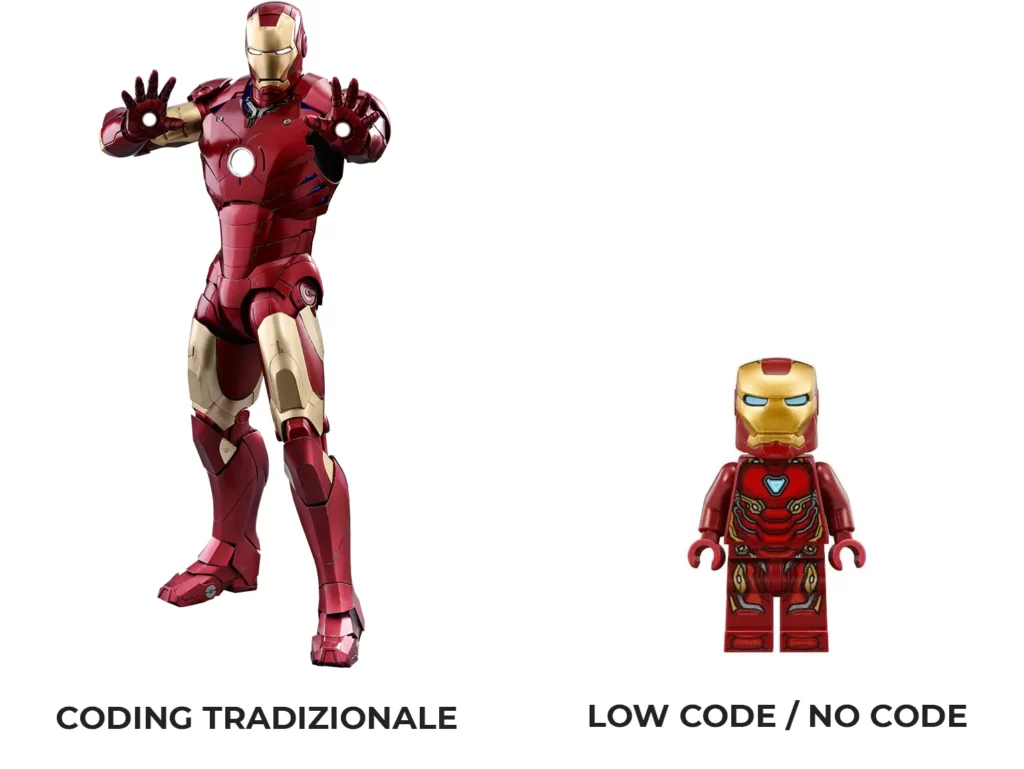Low Code and No Code platforms have gained traction in recent years due to their user-friendly nature, but the allure of these systems does not always equate to a gold standard. While they offer valuable solutions within specific scenarios, they cannot wholly supplant the nuanced and intricate work that dedicated coding by professional programmers provides.
“Low Code” and “No Code” platforms have emerged as pivotal players in the landscape of software development, increasingly viewed as the vanguard of innovation in the field.
Gartner, an esteemed member of the S&P 500 and a global consulting firm, has reported that the current demand for skilled programmers outstrips the available market supply by a factor of five. This disparity underscores a significant deficit in the time and human capital required to address the swiftly evolving needs of businesses—a gap that has fueled the burgeoning interest in No Code and Low Code alternatives.
With tools that boast both high performance and user-friendly interfaces, the realm of programming is undergoing a transformative era. It’s now accessible to many who previously faced barriers due to a shortage of developer talent.Yet, the question arises: is the burgeoning trend of Low Code and No Code as promising as it appears, or is it merely a fleeting phenomenon?

At Hermes, we maintain a vigilant perspective on all developments that present opportunities for advancement or the streamlining of processes. As such, we are unhesitant in integrating Low Code or No Code solutions into our practices where they serve a strategic purpose. However, we also uphold a discerning attitude towards their practical applications and the true capacity of this “novel” methodology. It is crucial, therefore, to begin with a clear and comprehensive definition.
What is Low Code/No Code?
When we talk about Low Code/No Code we’re referring to the paradigm shift in software development that streamlines the creation process. Low Code platforms, although less complex than full-scale coding environments, still require a collaborative team of professionals. This team, often comprising developers, system integrators, and enterprise architects, works together to harness the platform’s capabilities, ensuring the complex needs of business solutions are met.
Conversely, No Code platforms represent a further simplification in software development, enabling even those without any coding expertise to build applications, websites, or automations. This is achieved through user-friendly interfaces and tools that facilitate the creation process without the need for traditional programming.
Both Low Code and No Code frameworks utilize graphical user interfaces (GUIs), allowing users to construct solutions rapidly. These GUIs circumvent the intricacies of conventional programming, making software development more accessible to a broader audience.

The integration of AI-based systems has been a catalyst for the widespread adoption of these platforms. AI has empowered users to create functional products without requiring deep technical knowledge, providing essential support in areas such as design, logic, and user experience.
AI’s deep learning capabilities have been pivotal in streamlining tasks that were traditionally complex and time-consuming. Activities like code analysis, debugging, and iterative optimization have become more efficient, reducing the barriers to entry for software development.
In conclusion, while Low Code/No Code solutions offer a quicker route to functional products compared to manual coding, there is often a trade-off in terms of performance and customization. These solutions, however, have not diminished the value of skilled programmers whose expertise is vital for creating sophisticated and finely-tuned software applications.
What are the main advantages of Low Code/No Code compared to “traditional” coding?
- Enhanced efficiency: traditional coding can take months, even years, to develop a platform, while Low Code/No Code solutions can be operational in mere days or weeks.
- Augmented productivity: the expedited development cycle afforded by Low Code/No Code allows for simultaneous progression on multiple projects, enhancing overall productivity.
- Swift iteration: Low Code/No Code platforms facilitate quick user feedback integration, enabling rapid iteration and refinement of the product.
- Increased stability: by utilizing pre-tested components, Low Code/No Code platforms are more stable and less prone to errors and security vulnerabilities.
- Reduced development costs: the investment required for a Low Code/No Code platform is substantially less than that of one developed through traditional coding due to the decreased labor and time resources needed.
Considering these benefits, should we then exclusively concentrate on No Code/Low Code solutions?
The concise response is no. While there are undeniable simplifications, this approach originated to meet a particular market need and isn’t a full substitute for traditional programming. Theory and practical application often progress at different paces. Even though this new method appears to be straightforward and efficient, the daily reality for developers, deeply ingrained in traditional coding, demonstrates that it remains indispensable.
Hermes’ viewpoint
From Hermes’ perspective, Giacomo Caturegli, co-founder of Hermes, offers a powerful metaphor highlighting the clear distinction between traditional coding and No Code/Low Code. He likens traditional coding to clay—malleable and shapeable in the hands of an artist (the developer), who can craft every detail from the ground up with complete freedom. On the other hand, No Code/Low Code is equated to Lego bricks, which while solid and user-friendly, come with inherent limitations in their rigidity and predefined shapes.
The core difference between these two methodologies is twofold: the extended time required to mold raw materials (code) and the higher level of skill needed in comparison to the child-friendly simplicity of Lego (No Code/Low Code).
These factors might incline one towards the apparent ease of No Code, but before making a choice, two crucial questions should be considered:
- What variance can we expect in the end products of the two methods?
- How critical is the need for an immediate result?
The answers to these two questions are crucial, as the right choice between traditional coding and No Code/Low Code solutions hinges entirely on current needs. While the artist’s approach may be more time-consuming, the final product stands out for its precision and customizability, reflecting the originality of the creator’s vision. In contrast, the “Lego” method, despite its functionality, will often be a replica, lacking the unique flair of the artist’s genius.

To bring this metaphor into a more concrete scenario, consider the development of a management software program.
In today’s diverse market, despite the plethora of products catering to various needs, there’s a continued trend of developing custom solutions involving considerable time and resource investments. This trend persists because while off-the-shelf solutions are functional, they often only suffice to a point.
The key lies in aligning with the client’s goals and needs, which has led us to a stance that shuns dogmatism in favor of pragmatism and flexibility. The ultimate insight is that there’s no universally correct solution; the optimal choice is contingent upon the client’s immediate requirements. In truth, a hybrid approach, blending both traditional and Low-Code/No-Code methodologies, often emerges as the most effective, leveraging the strengths of each.
So, in response to the question of what is better between Low-Code/No-Code versus traditional coding, we respond that “better” is a fluid concept, which needs to be adapted and personalized to each unique scenario.
Our Talents are trained to adapt to varying circumstances in a nearly agnostic manner, collaborating as a team to weigh all options and determine the most efficient timeline and strategy to meet the customer’s needs.



